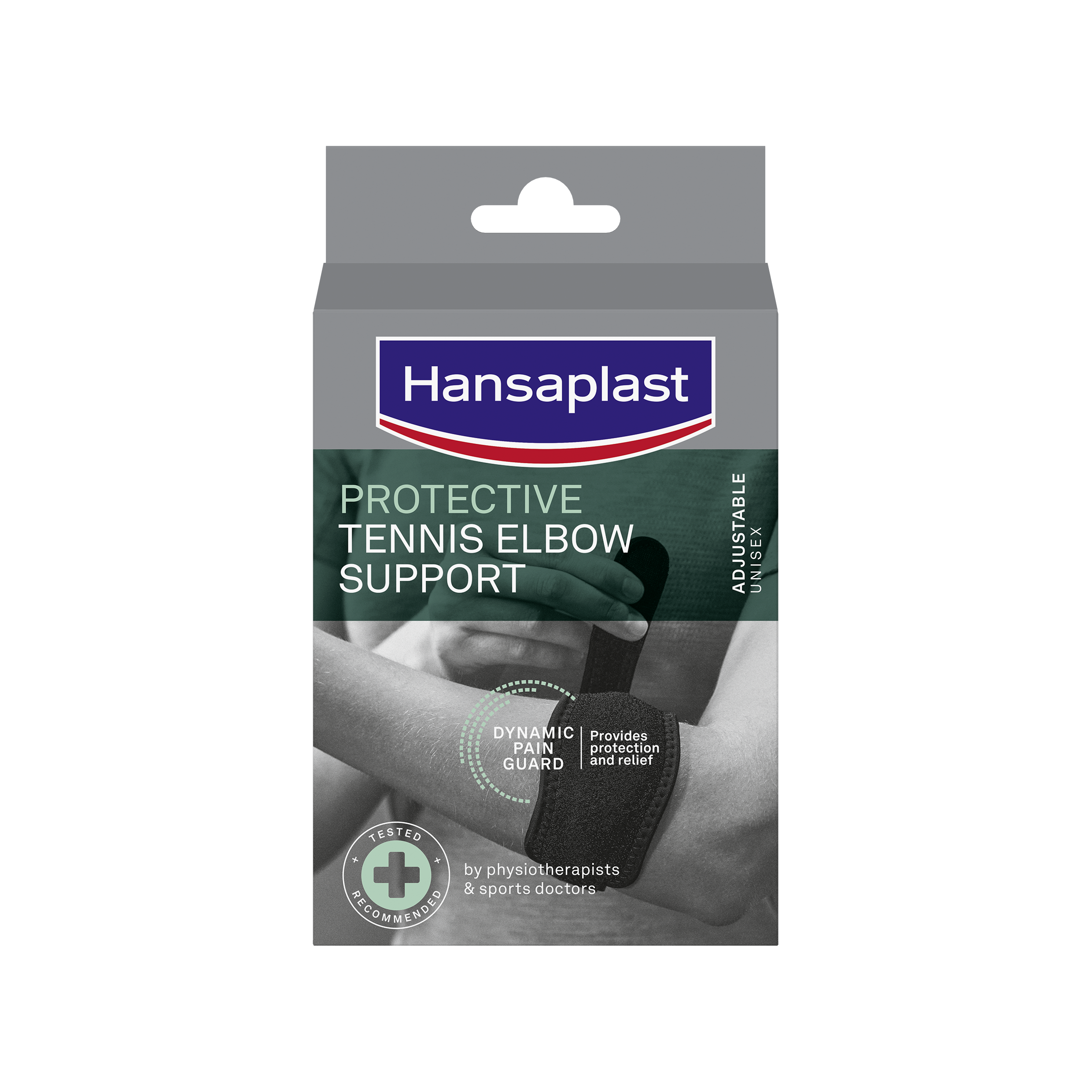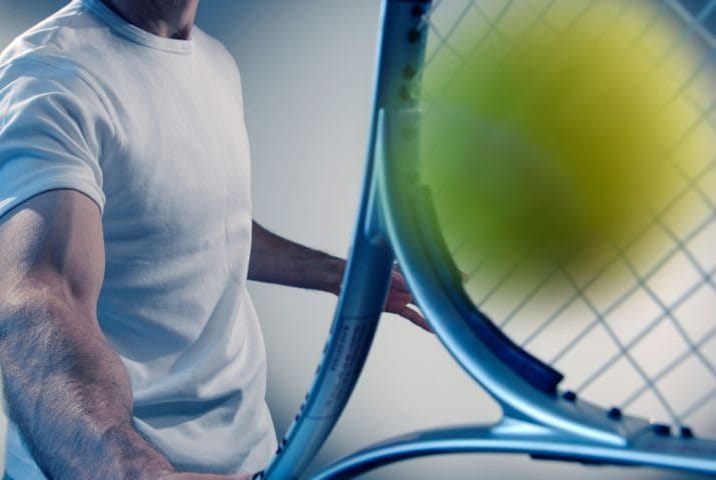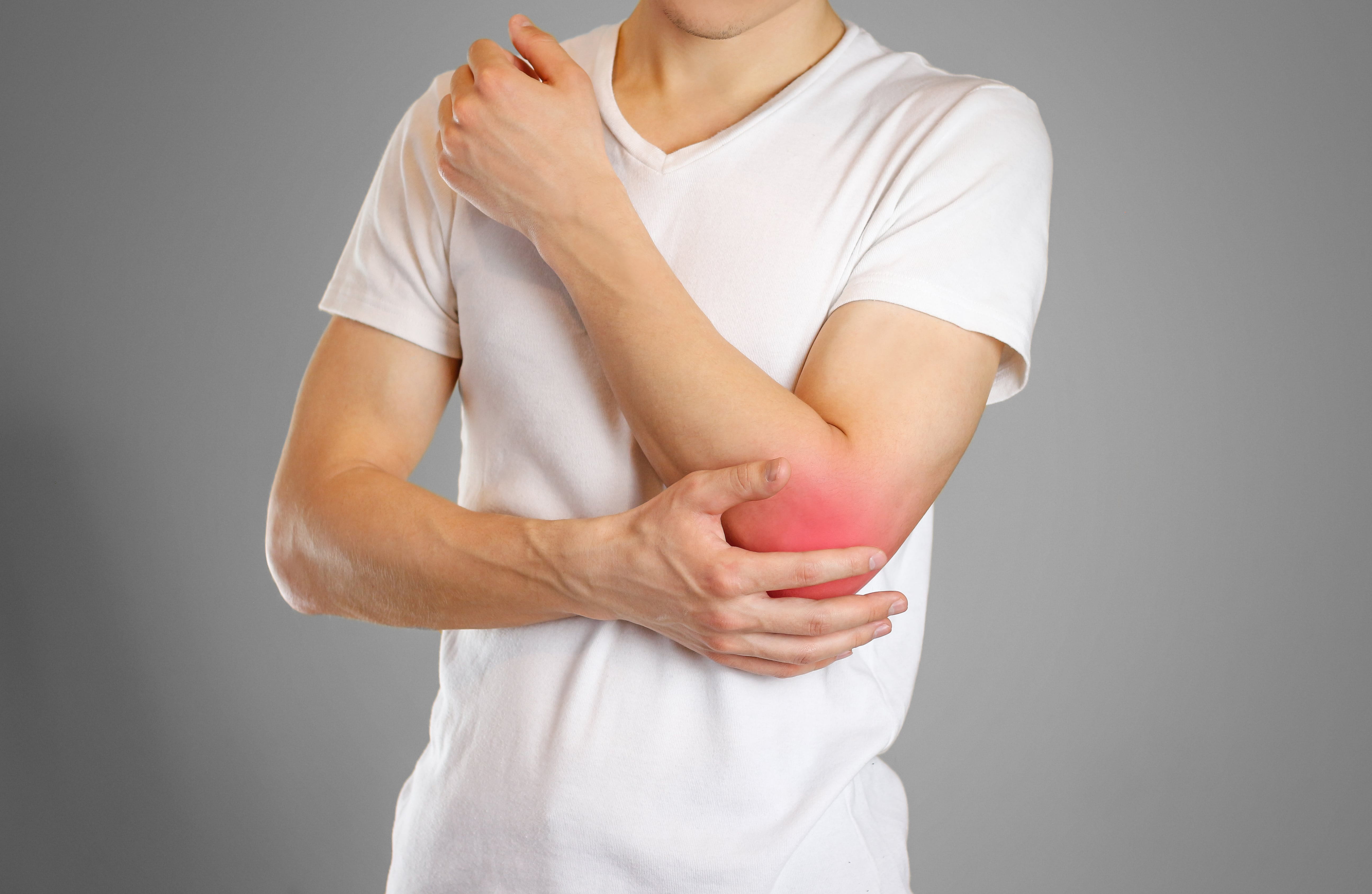
A tennis elbow (epicondylitis humeri radialis) is a painful overuse of certain tendons in the elbow area. The origin of the pain is where the extensor tendons of the forearm muscles attach to the humerus (outside above the elbow).
Incorrect - usually one-sided - loading as well as overloading of the forearm muscles through repetitive movements of hand and arm, can trigger an inflammatory reaction at the tendon insertion.
Those affected feel the sometimes very painful condition of tennis elbow even with slight bending and twisting movements of the wrist and elbow joint, as well as when clenching a fist, opening a bottle or even when pressure is applied to the elbow from outside. Particularly distressing: The pain can radiate from the elbow into the entire arm and into the fingers.
Tennis elbow: Recognizing and correctly assessing symptoms
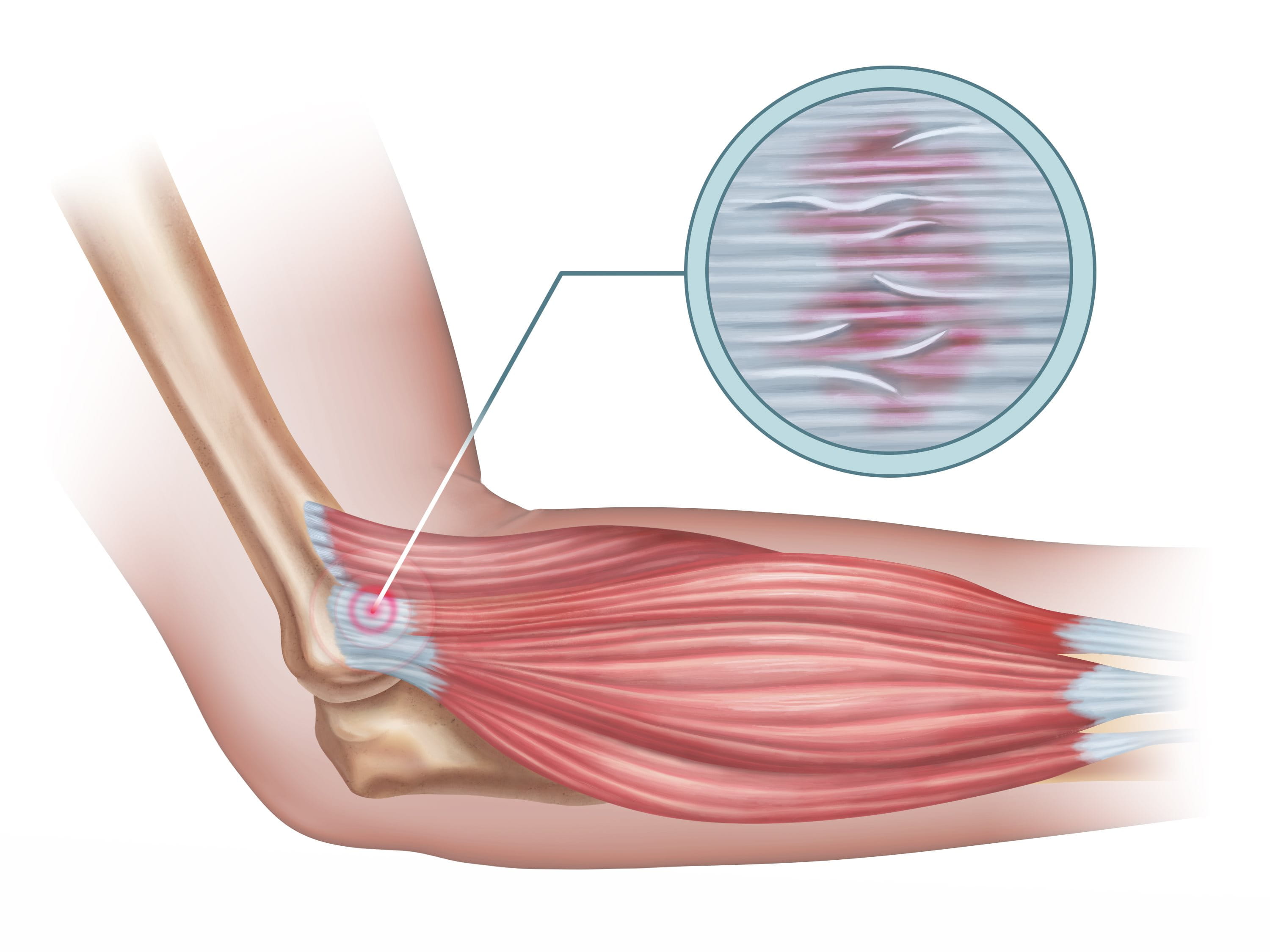
A first indication of a tennis elbow can be pain in the outer elbow area - this is the leading symptom. If you also can no longer grip strongly with the affected hand, this can be a further indication of a tennis elbow.
It is also important to determine which movements trigger the discomfort. The stabbing pain is noticeable when bending and stretching the arm and hand, among other things. Pain when rotating the forearm is also one of the typical tennis elbow symptoms. Shaking hands, holding a coffee cup or twisting open a bottle can be painful - any movement that uses the affected muscle in the forearm. A slight feeling of numbness or tingling may also accompany the pain, for example in the area of the elbow or hand. Particularly at the beginning of the symptoms, pain at rest may also occur in addition to the load-dependent symptoms.
Possible tennis elbow symptoms overview
• Pain on the outside of the elbow (also pressure pain)
• The pain is stabbing, especially during twisting and bending movements
• Feeling of weakness in the wrist
• Feeling of not being able to grip properly
• Pain radiates to the entire arm (hand, forearm, upper arm)
• Possibly signs of inflammation of the tendon insertion: redness, swelling, warmth
• Sensory disturbances in the entire arm area or in parts of it
• First pain during movement, later also pain at rest possible
Differential diagnosis of elbow pain: Differentiation from possible diseases with similar symptoms
Pain in the elbow or near the elbow can also have several other causes. These include, for example, rheumatic diseases, osteoarthritis, bursitis or nerve damage in the area of the elbow joint. A fall on the elbow can also cause pain, e.g. due to a simple contusion or even a fracture of one of the bony structures involved in the elbow joint.
The final diagnosis always belongs in the hands of the doctor.
Causes of epicondylitis: Do only those who play tennis get a tennis elbow?
That the eponymous sport "tennis" can cause tennis elbow is certainly true. However, a repetitive motion pattern also occurs in other sports such as golf, badminton and weight training.
However, one-sided loading and overloading outside of sports can also cause a tennis elbow: Housework, gardening, computer work, manual labor - practically anyone can be affected. Even people who play an instrument like the violin or guitar can get a tennis elbow.
How does a tennis elbow develop?
Epicondylitis usually develops gradually through repeated overuse of the tendons and muscles of the forearms that attach to the elbow. Thus, the first signs of tennis elbows are often not taken seriously. On the other hand, tennis elbows can also develop spontaneously, such as after unusual physical exertion like manual labor or other activities with increased use of the muscles moving or stabilizing the wrist.
Diagnosis: How is a tennis elbow diagnosed?
If you have pain in your elbow, you should first see your doctor. It is also possible to go directly to a specialist (the orthopedist is responsible here).
The examination is first initiated by a discussion of the exact medical history and previous illnesses (anamnesis). A physical examination and uncomplicated tests then supplement the information obtained in the medical history. If the findings are inconclusive and other diseases are to be ruled out, further investigation is required. Here, imaging procedures such as X-ray, ultrasound or MRI provide information.
Treatment tennis elbow - this is how epicondylitis is treated
Conventional treatment is possible for a tennis elbow. Surgical treatment is only necessary in the rarest cases.
Conservative tennis elbow therapy
Once the diagnosis has been made, the doctor decides which therapy is most suitable in the individual case. Some treatment costs are covered by statutory health insurance. To ensure the success of the treatment, the most important thing at the beginning of the therapy is to relieve the irritated tendon insertion. The chronically increased tension caused by pulling the muscles must be reduced. This means for the patient: Activities that trigger pain must be avoided and the forearm muscles must be stretched regularly and intensively. This recommendation applies in particular to the acute initial phase, which should be over after about 2 weeks.
As soon as the patient no longer has severe pain in the movement process, physiotherapy and stretching and strengthening exercises (i.e., special exercises that stretch and strengthen the arm and wrist muscles) can be started. Other possible manual and physical therapies include, for example, intensive local massages of the affected muscles and heat or cold treatments (depending on the stage of recovery).
For acute as well as persistent symptoms, affected individuals can also wear special supports. These supports can reduce muscle tension and traction at the tendon origin by applying targeted pressure to the tendon origins, thereby changing the direction of pull of the tendon. As a rule, these braces should be worn for several hours a day, especially during exertion. Tape bandages and so-called kinesiology tapes can also alleviate the symptoms of tennis elbows under certain circumstances. However, appropriate expertise or physiotherapeutic support is necessary for correct taping.
Doctors often use medicinal therapies such as injections to treat a tennis elbow. Also, locally or orally applied anti-inflammatory drugs are used (for example in the form of gels or ointments, or pills to take). You should discuss with your doctor what is appropriate in each individual case, but the so-called non-steroidal anti-inflammatory drugs (NSAIDs) are frequently used.
Shock wave therapy is another commonly used form of treatment. In addition, there are other, less frequently used forms of therapy such as therapy by ultrasound, X-ray, laser, or acupuncture.
Surgical tennis elbow therapy
Surgical tennis elbow therapy is at the end of the treatment sequence and is considered when long-term conservative therapy does not lead to lasting success. The doctor decides whether a surgery is necessary. Such surgeries are routine procedures with uncomplicated aftercare. Nowadays, the procedure is also minimally invasive: the tendon is treated with the help of tiny cameras and surgical instruments inserted into the region (arthroscopy).
Healing a tennis elbow: How long to take it easy and when to exercise again?
A tennis elbow is considered curable if treated in time. But how long does it take for a tennis elbow to heal? That can vary from case to case. Some people get rid of the painful epicondylitis after just a few weeks. But many struggle with the symptoms for months, some even longer - the tennis elbow does not get better.
Should tennis elbow be spared or should it be moved?
While physical rest is advisable during the acute phase of the disease, targeted exercise and muscle building are essential during the healing phase.
As long as pain occurs under stress and during certain movements, consistent rest is key. Depending on the severity of the symptoms, you should take a few days off, always in consultation with your doctor, and then resume movements and exertion as soon as possible, adjusted to the pain. In this phase, relieving supports or an applied kinesiology tape can be helpful.
If you notice an improvement, special stretching and strengthening exercises of the arm muscles can accelerate the healing process. Strengthening of the chest and shoulder blade muscles and posture training are also supportive.
Stretching the muscle groups of the forearm can increase its mobility and reduce muscular tension. To additionally decrease the muscle tone and improve the blood circulation - and thus the nutrient supply - the work with a fascia roller is also recommended.
If you suspect that you have a tennis elbow, then doctors (in this case general practitioners or orthopedists) can be important contacts. Physiotherapists can also give you good advice and recommendations on specific exercises.
If the symptoms persist over a longer period of time, then it can and may be quite uncomfortable during movements or the exercises recommended by the physiotherapist - the movement is nevertheless important and will be helpful for the further progression of the symptoms.
Prevention: To prevent a tennis elbow from becoming chronic
Chronic tennis elbow
.jpg)
Epicondylitis in the early stages can usually be treated well. The elbow pain is then usually not yet permanent. In this phase of the disease, the pain is mainly triggered by pressure on the outside of the elbow. So is the strain on the muscles associated with the affected tendons.
It becomes problematic if you ignore the symptoms mentioned above and do not consult a medical professional. Then it can happen that the pain becomes stronger and stronger, radiates further and further into the surrounding musculature and occurs even in rest phases. This is how a tennis elbow can become chronic. Treatment is then usually more protracted. Current studies and science clearly show that the prognosis in the case of a tennis elbow is very good and that exercise and load (despite any pain) are permitted and even important. A supportive measure such as a brace or supports can be beneficial and enable you to use your arm well in everyday life more quickly.
Preventing a tennis elbow: measures to reduce the risk
While you cannot completely avoid the risk of a tennis elbow, you can follow the general advice to reduce the risk or positively affect existing symptoms:
• When playing sports, make sure you perform your movements correctly.
• Discuss with your trainer how to train in a technically correct way, e.g. golf, tennis, strength training, to prevent overloads from developing.
• Take regular breaks with stretching and loosening exercises during strenuous and, above all, unfamiliar activities. This allows the muscles to relax in between.
• If you already have pain, avoid the pain-inducing movement for a few days. This means reduce repetitive, one-sided arm movements and thus the overload of the elbow joint in everyday life, work and sports. Do tennis elbow symptoms make themselves felt repeatedly? Then do not hesitate to consult a doctor.
• If necessary, wear an epicondylitis brace or support (also called a tennis elbow support - available, for example, in pharmacies, medical supply stores or drugstores).

Reviewed by experts: Dr. Michael Richter
Dr. Michael Richter has been a state-certified physiotherapist since 1999 and works at the renowned “Rückenzentrum Am Michel” in Hamburg, Germany - an interdisciplinary center specializing in the treatment of people with acute and chronic musculoskeletal complaints.
He is an expert in manual therapy and exercise therapy and has been treating people with back and joint problems for 20 years. In addition to his enthusiasm for the manual treatment of patients, pain education is very close to Michael's heart and it has been his ambition for years to inform patients and colleagues with the best and scientifically sound facts on the subject of pain.
In addition to his practical work with patients, Michael is involved in teaching and research as a substitute professor in the field of physiotherapy at the Münster School of Health in Münster, Germany.
Notice:
Please note that the tips and advice given on this website have been compiled with great care but can in no way replace medical advice and treatment. If you have or suspect a health problem, see a doctor and follow medical advice regardless of what you have learned on this website.
If there is a serious injury, it must be assessed and treated by a (specialist) doctor. If you are unsure about the cause of your pain, you should also consult a doctor.
If the symptoms are accompanied by redness, swelling, overheating of the joints, persistent or severe pain and/or neurological symptoms (e.g. numbness, tingling) or if the pain radiates to the legs, a doctor should be consulted immediately.
The information on this website is not intended as a basis for self-diagnosis, treatment and medication.
Please always read the instructions for use or package inserts of our products carefully and comply with them.
For more information about our products, please contact us via the Hansaplast hotline 040/ 4909 7570 (Mon.-Fri. 8.00 - 18.00h) or via e-mail at Hansaplast@Beiersdorf.com.
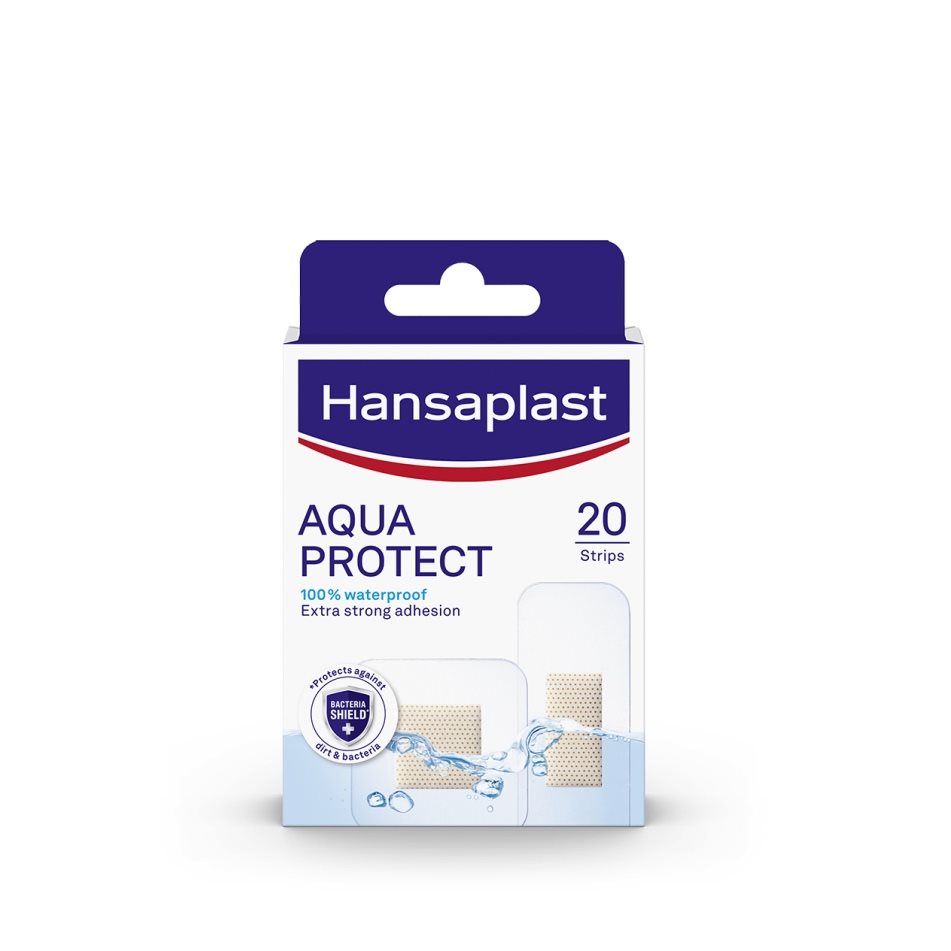
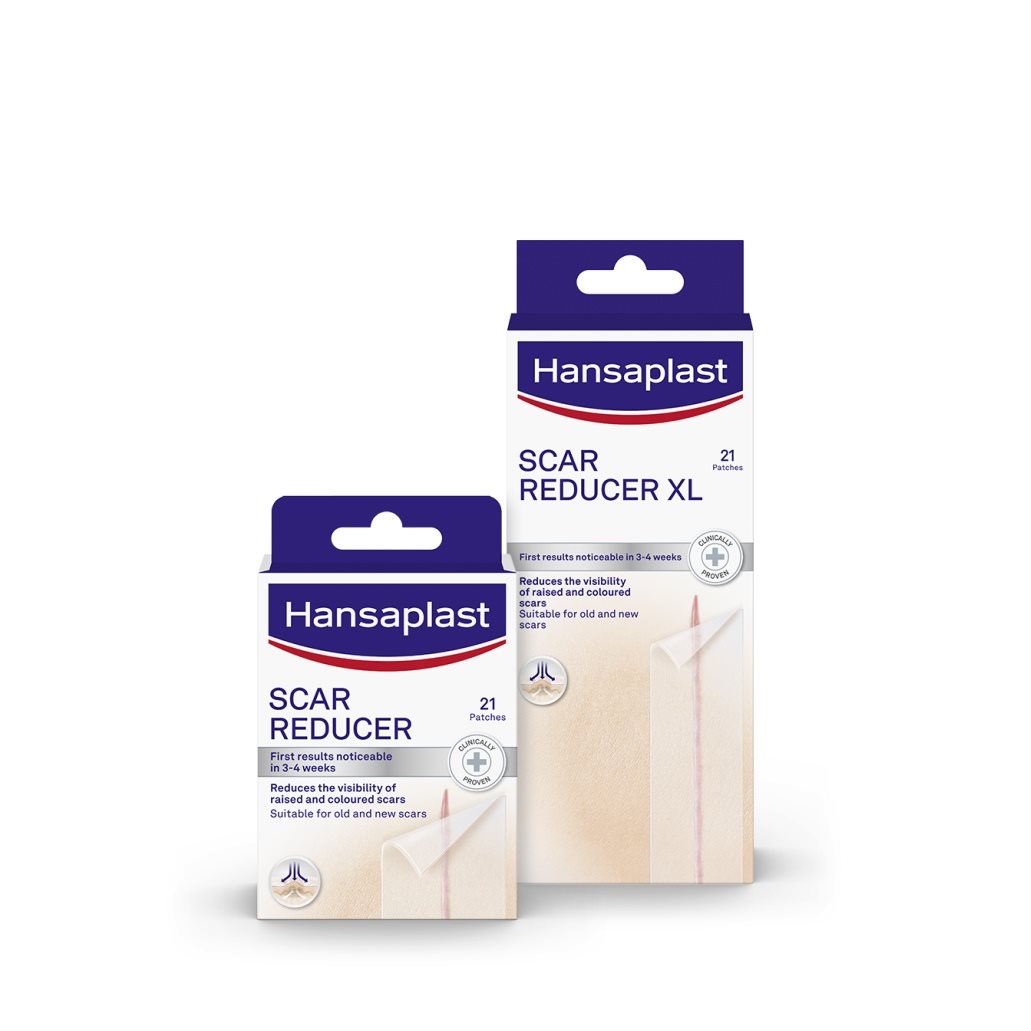
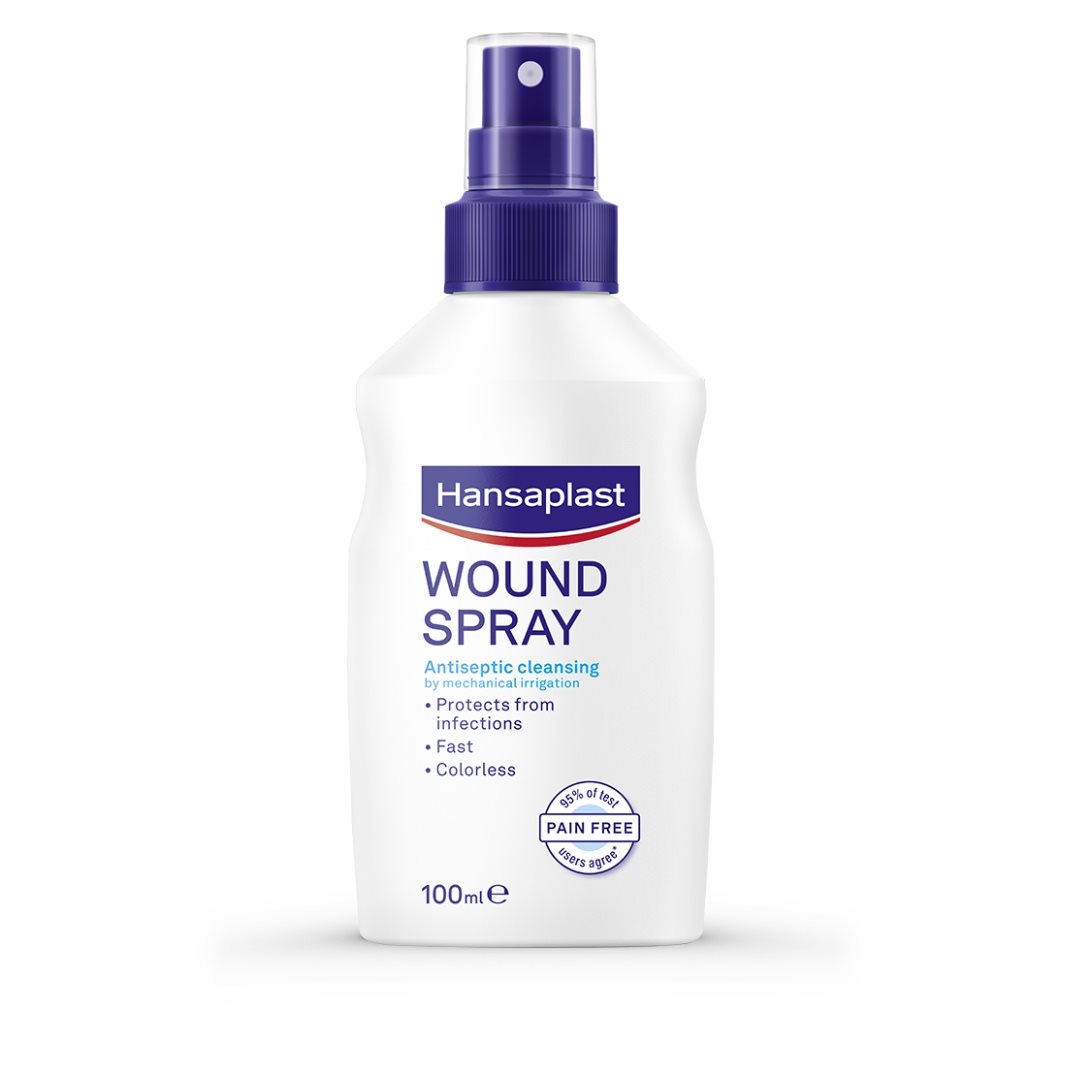
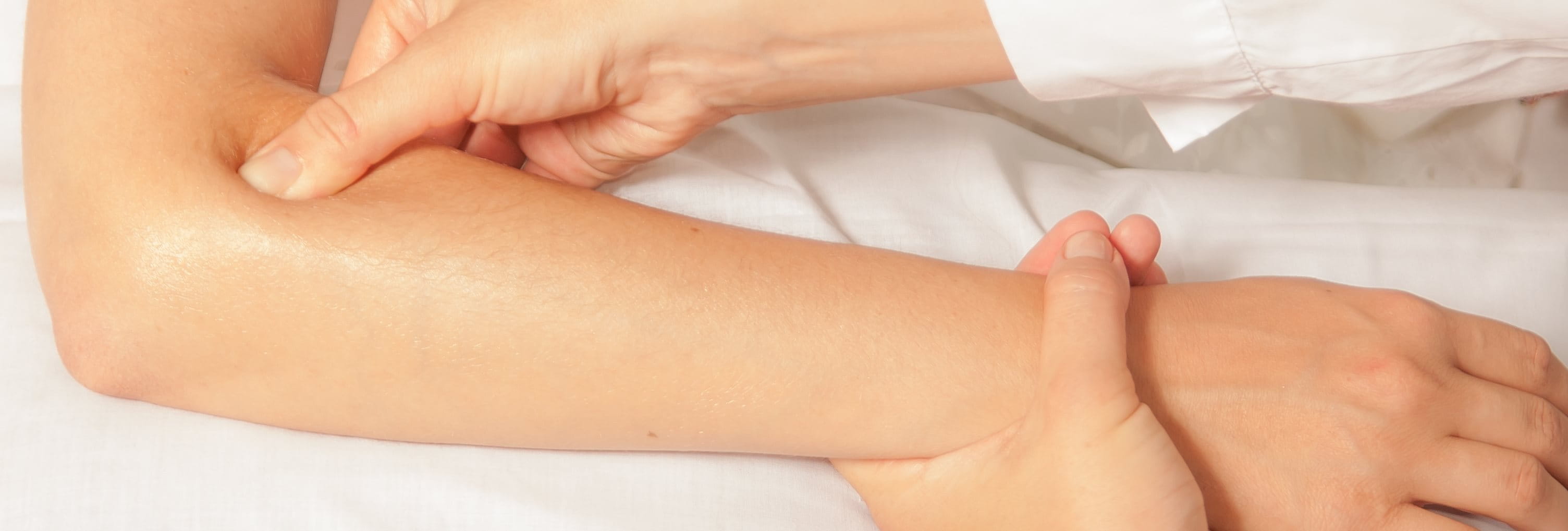
.jpg?rx=0&ry=113&rw=974&rh=974&hash=5E60F05164DFA00335B86D82446BB3A7)
